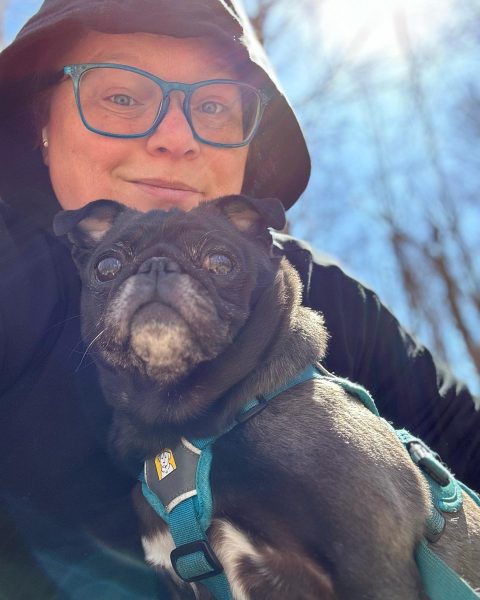My experience at Anime Boston 2016
I’m sitting up against a wall and sipping a coconut bubble tea, uncomfortably close to at least five other people, only three of which I came here with. We have been sitting here for three hours, and the wait isn’t over yet.
We’re in line for the Masquerade event at Anime Boston, where people in cosplays show off their craftsmanship or perform skits on the stage in a show that lasts nearly three hours (in addition to the four hours we waited for the show to start).
I have attended Anime Boston three years in a row now. It is the largest anime convention on the east coast. Exactly 26,975 people attended Anime Boston 2016, according to the Anime Boston website.
Naturally, I was expecting the crowds to be just as bad as the previous year. Even worse, in fact, due to new security regulations; in addition to the bag-check lines prior to entering the convention center, they now had metal detectors, which held up the lines even more. On Saturday, the biggest day for the convention, I waited in line for nearly an hour before getting into the con.
While this idea may not sound appealing to just anyone, to a fan of anime (or pop culture in general) it is a chance to meet other people with the same interests, meet famous voice actors, and attend a wide variety of interesting and exciting events.
In case you’re not aware, cosplayers and people who watch anime are an increasingly growing subculture. Anime is Japanese animation, and it often has its own style, aesthetic, and tropes that set it apart from other animation styles.
Cosplaying is dressing up as fictional characters (or, rarely, real people or historical figures). It ties heavily into the anime subculture, and although many people at anime conventions do cosplay characters of Japanese origin (this includes video game characters), there are many other common cosplays, such as Doctor Who, Marvel superheroes, and Disney characters.
The masquerade is the biggest event each year at Anime Boston. In its 3 hour duration, two main sections are presented: cosplay showcases and skits. At the end of the show, various awards are given out by the panel of experienced judges, including judges’ choice awards and best in show.
The con hosts many panels with a wide range of topics, from video games to anime to conventions in general. According to Anime Boston’s website, there were a total of 377 hours of panels and 256 hours of video (anime showings) at the 2015 convention.
One of my favorite parts of the convention is shopping around the dealer’s room and artist alley. I prefer buying from artist alley, because you are buying from artists who are selling their work. The dealer’s room, on the other hand, are mostly companies selling their merchandise, although there are many small businesses that set up shop.
In addition to the $60 weekend con pass and $157 in hotel fees and gas prices, I probably spent around $200 on food and souvenirs combined. I blame that on the many good food and beverage establishments in Boston, and the fact that the mall attached to the convention center had a Cheesecake Factory, which I had never been to before.
It’s easy to lose track of time while you’re shopping around or eating, so always be mindful of the time and the schedule of events. I wanted to attend a panel titled “Myths of The Legend of Zelda,” but I got there 20 minutes before the event and the room was already filled. The line I was waiting in, easily 75 people long, was basically a waiting list to get into the room. This is why we line up so early to get into the masquerade.
If you do decide to go to a convention, be aware that there can be a lot of stress among the fun, especially for a first-time con visitor. Since I have attended Anime Boston three times and Bakuretsucon in Colchester twice, there are many tips that I have compiled over the last few years to help combat the difficulties.
The most important thing would be, if you are able, to bring more money than you think you will need. With food and hotel expenses and possible emergencies, as well as artist alley and the dealer’s room, it’s extremely easy to lose track of how much you’ve spent. You may also want to keep cash out for this very reason; although many dealers and artists will take credit cards, it’s easier to manage your money when it’s in front of you.
Cons are notorious for what is known as the “con plague,” or basically any sickness that spreads rapidly at a convention due to people being in such close proximity. Good ways to prevent getting the con plague are staying well-hydrated, making sure to eat enough (which is hard to do at cons), and getting enough sleep (which is also hard to do).
I would suggest packing sandwich supplies and snacks to help with eating well and saving money. In addition, always carry a water bottle around with you and make sure to wash your hands throughout the day, or bring hand sanitizer if you want to really fight off germs.
If you are cosplaying, I would suggest giving yourself plenty of time before and after the con each day to account for any repairs or sewing you may have to do. Last-minute emergencies can be the difference between having a great con day and missing a panel you desperately wanted to go to.
While many people think it’s ridiculous to spend this much time, stress, and money on an anime convention, there are many types of conventions out there to appeal to a wide variety of people. These tips will be applicable to any kind of convention you would want to go to. And believe me, the experience is well worth the cost.





